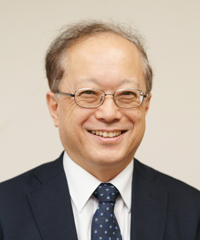In my previous post, I wrote about my personal experience with Covid-19 vaccination and noted that intramuscular injection was not painful.
As for side effects, in my case, there were hardly any. However, that can perhaps be attributed to the fact that I am already an elderly person. My younger acquaintances reported experiencing fever and headaches after vaccination. In particular, the statistics show that nearly half experienced fever upon receiving the second vaccination*1. This sort of side effect does not require any particular treatment except for perhaps an antipyretic analgesic.
However, most people are not worried about intramuscular vaccination and slight side effects such as fever, but rather anaphylaxis, which is a strong allergic reaction.
Here, I would like to tell you that although the very name sounds horrific, anaphylaxis is not that scary if a doctor or nurse and the necessary medical treatment are readily available. My point today is the importance of ensuring that a doctor or nurse and the medical treatment are available and can be easily accessed.
In the United States and the UK, where vaccination began earlier, allergic side reactions after receiving either the Pfizer or Moderna vaccine have been classified into two categories: "mild or moderate allergic reaction" and the severe condition called "anaphylaxis." Both categories depend on the type and degree of symptoms during the period from a few minutes to 30 minutes after vaccination.
Symptoms of "light or moderate allergic reaction" include (1) swollen lips, face or eyes (2) hives (3) a prickling sensation in the mouth and (4) abdominal pain. As for abdominal pain, it is a symptom that results from, for example, smooth muscle contraction or swelling in the intestines.
In contrast, symptoms of anaphylaxis include (1) respiratory distress, (2) swollen tongue, (3) swollen throat, (4) dysphonia and a hoarse voice (due to swollen vocal cords), (5) wheezing, persistent coughing, and (6) dizziness and fainting.
However, for some reason, reports on anaphylaxis by the mass media in Japan also appear to include these light and moderate allergic reactions as well.
Both "light and moderate allergic reaction" and "anaphylaxis" are also symptoms of the following internal conditions.
Allergens (substances that induce allergy such as food, medicine, bee toxin, etc.) stimulate cells in the walls of blood vessels (endothelial cells), after which Immunoglobulin E (Ige) is then quickly released into the blood. This leads to such symptoms that are caused by smooth muscle contraction in the entire body (smooth muscle contraction in the intestines ->, abdominal pain, contraction of the trachea and bronchial tubes -> breathing difficulty), dilation of blood vessels (low blood pressure, fainting), and perivascular edema (swelling of the lips and face, hives), etc.
When blood vessels expand throughout the body, what happens is equivalent to a decrease in the relative total blood volume in circulation. This then causes low blood pressure; and in some cases, shock (circulatory collapse) occurs (dizziness, loss of consciousness).
According to this explanation, it may seem that something terrible is happening, but if a doctor or nurse and medical treatment are available, there is not so much to worry about. That is because there is medicine that can improve this internal reaction in an instant. The administered drug is adrenaline, which has the strong effect of constricting blood vessels (adrenaline in diluted form as Bosmin Solution). In the case of mild to moderate cases, follow-up observation takes place, and if serious allergic reactions (anaphylaxis) appear, intramuscular injection of Bosmin is effective in quickly relieving most of these symptoms. If the case is very serious and reaction does not appear to be positive, it can be cured in most cases by intravenous drip infusion of adrenaline or steroid medication. According to medical textbooks, the prognosis is good if this treatment is administered right away. This sort of treatment is a basic medical practice that can be provided by anyone who is a clinician.
Certainly, anaphylaxis due to food allergies and bee bites can be life-threatening, and in most of these cases, the symptoms did not appear in close proximity to a medical facility and immediate treatment was not provided. To prevent such cases from occurring, those with food allergies and those who are highly likely to be bitten by a bee should have Bosmin prescribed by a doctor and then carry a portable injection kit (epinephrine autoinjector like EpiPen®) which will allow easy self-injection. This makes it possible to handle the situation (treatment) yourself.
At COVID-19 vaccination centers and medical facilities, those receiving the vaccine are asked to remain on site for 15 minutes after being vaccinated. After my vaccination, I also stayed for 15 minutes in a room next to the vaccination center in case any symptoms might occur.
In this way, anaphylaxis is not that scary if measures are in place to immediately treat it wherever it occurs.
Some of you who are young may be hesitant to get vaccinated because they think that even if they become infected with COVID-19, the symptoms will be mild. The mother of one of my patients, a woman in her late forties was recently infected with COVID-19, but has now recovered. She had no fever, only a strong, persistent cough, but continues to have no sense of taste and smell. We should never underestimate COVID-19 infection just because of one's young age.
- *1 Ministry of Health, Labour and Welfare. Survey of Health Condition after COVID-19 Vaccination
https://www.mhlw.go.jp/stf/seisakunitsuite/bunya/vaccine_kenkoujoukyoutyousa.html



 Yoichi Sakakihara
Yoichi Sakakihara










